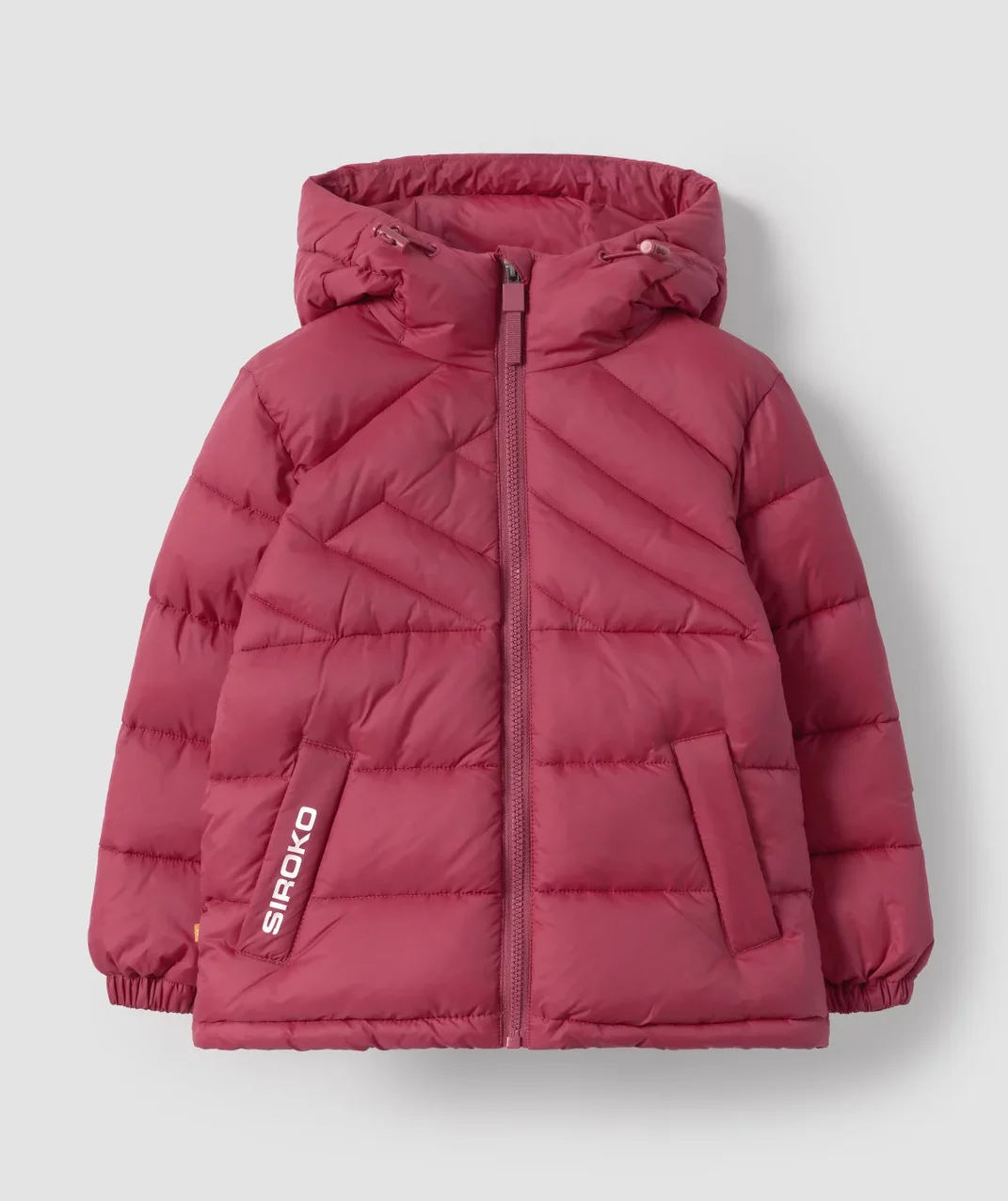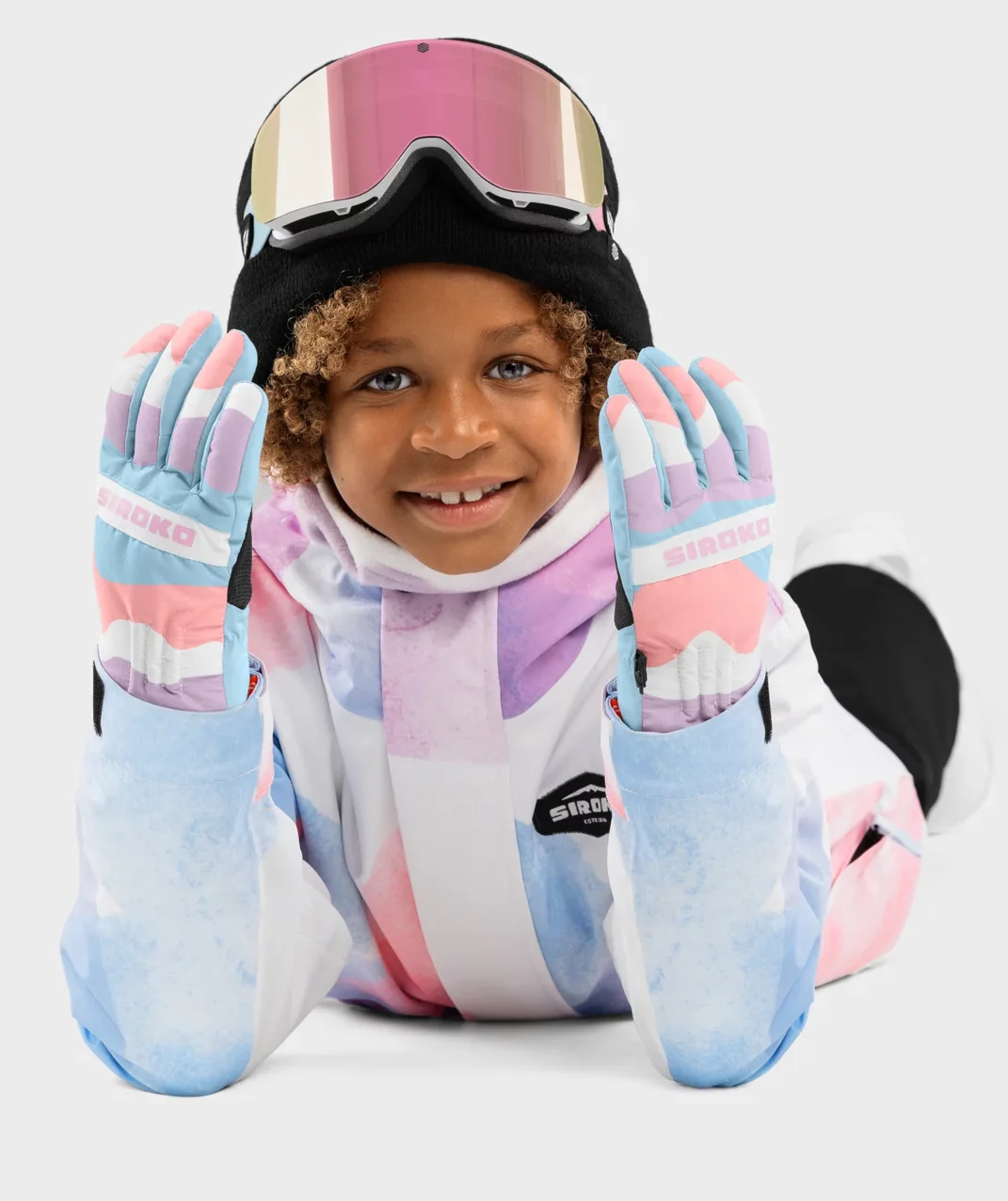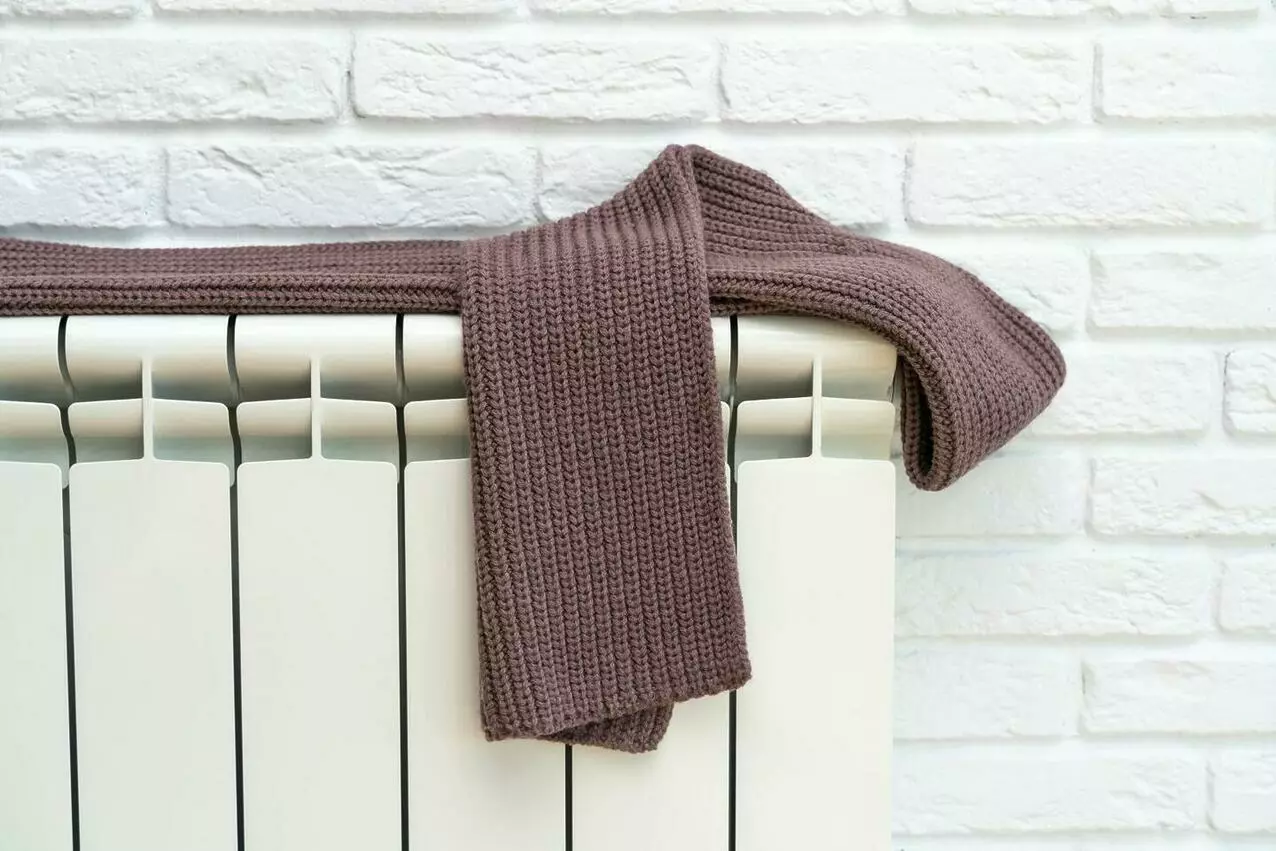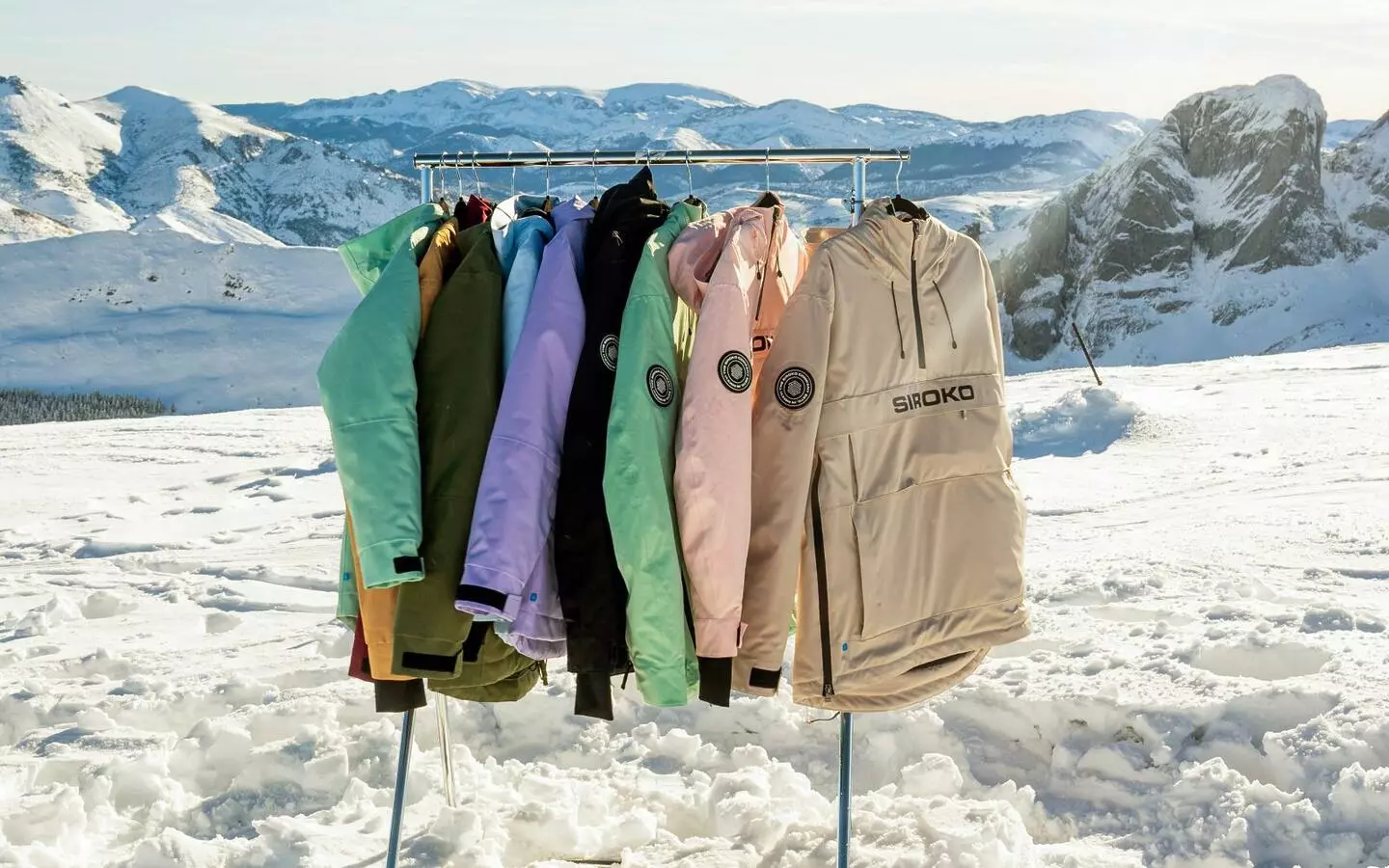Investing in good-quality winter sports wear is quite the effort, which is why getting into good maintenance habits can extend its life and ensure it remains in peak condition all season long – and ideally for at least several winters. If you don’t know where to start, remember that the label on each garment is where you’ll find the instructions on how to care for them without damage. Even so, we have gathered some guidelines and general recommendations in a simple, practical list, suitable for the vast majority of ski and snowboard items and brands.
Washing: less is more

- Always read the label: We said it before, but we’ll say it again and again. Checking the instructions on the labels is key. Given that some garments have delicate fabrics, membranes or technical features that require special care, each of them has their own washing and caring instructions you should be paying the utmost attention to. Make sure to go through each label before putting anything in the washing machine.
- Small loads and separately from the rest of your laundry: Winter sports clothing is quite bulky, so make sure you don’t overstuff the machine, otherwise it won’t wash properly. For example: two jackets and two pairs of pants would be an adequate amount. Don’t wash your winter technical apparel with regular laundry. It’s better to be safe than sorry.
- Pockets, zippers and Velcro fasteners closed: Make sure all the pockets are empty and closed, buttons fastened, zippers up and Velcro closures attached to prevent them from sticking to other garments and damaging the fabrics. Extra tip: turn each garment inside out to protect any designs or detailing and prevent wear and tear.
- Do not use regular laundry detergent: Avoid using just any detergent and go for one specifically targeted to technical clothing. They will keep the breathability and water resistance properties of the clothes intact. Another option would be using soft, neutral detergents, but stay away from powdered ones; always go for liquid detergents.
- Stubborn stains: Avoid using just any stain remover you have at home. Instead, use the same detergent you will use to wash the clothes, apply a small quantity over the stain and scrub it gently with a brush before putting the garment in the machine.
- Stay away from fabric softeners and bleach: These two items are your clothes’ worst enemy, as they can potentially obstruct any breathable membranes in them or damage the fabrics.
- Cold or lukewarm water always: Using hot water doesn’t wash your clothes better nor provides cleaner results. The best and safest option would be using a short, delicate washing cycle at 30 °C. Extra tip: set the spin cycle speed between 400 and 800 rpm to further protect your clothes.
- Empty the washer right away: Don’t leave your clean clothes inside the washer for too long after the cycle finishes. The faster you put them to dry, the better.
- Don’t forget your accessories: Make sure to clean your gloves, helmet and goggles properly as well. For the gloves, use a soft disinfectant and let them dry completely.
Drying = patience

- Hang drying: For best results, hang your clothes to dry in an open space with proper ventilation and away from any heat sources.
- Tumble drying: If you have a tumble dryer you can use, this method might be tempting, but bear in mind you must be extremely careful with excessive heat, as this can damage the waterproof properties and technical features of certain fabrics. Double-check the labels and whether the items can be tumble dried, use the mildest setting (60 ºC maximum) and take a look every 15 minutes to see if the clothes are dry.
- Reactivating the waterproof coating: Once washed, some items might need a little touch up. To reactivate the DWR water-repellent coating, use an iron at the lowest temperature setting or tumble dry the clothes in the shortest setting. Again, make sure to always check the labels to see if the clothes can be ironed or tumble dried. To prevent damaging the fabric while ironing, place a towel or cloth in between the garment and the iron.
How to wash and dry garments with down or synthetic insulation

- Wash separately: Don’t just separate these garments from your regular laundry, but also from the rest of your ski and snowboard clothes. The reason behind this is that to wash clothing with (any kind of) insulation, you need to put about 3-4 tennis balls into the drum of your washing machine to prevent clumping of the filling in the garments.
- Wash carefully: Use either neutral detergent or one specifically targeted to technical clothing and garments with insulation. Wash at 30 ºC using a delicate setting, and if the garment has stains, brush them gently beforehand with the same detergent you will be using to wash it.
- Avoid heavy spinning cycles: A short, delicate cycle setting (400-800 rpm maximum) is just enough to extract moisture without damaging the filling.
- Rinse twice: To make sure the filling is fully clear from any remains of detergent, repeat the rinse and spin cycles.
- Empty the washer right away: This step is already crucial for technical clothing, but even more so for garments with any kind of insulation. Make sure to start the drying process as soon as possible to remove all moisture from the garment and keep the insulating properties intact.
- Tumble drying: Set the dryer at low/medium temperature and put 3-4 tennis balls or dryer balls inside. This will prevent the filling from clumping, as it will help to redistribute the down or down-like material and to maintain the insulating properties of the garment.
- Hang drying: If you don’t have a tumble dryer, hang your clothes in an open space with proper ventilation, and shake each garment a little every now and then to fluff the filling up.
- Check that the clothes are fully dry: Any area with rests of humidity, no matter how small, can potentially result in bad odor or even mold. If necessary, put the clothes back in the dryer for another short cycle.
Storage: don’t just carelessly throw everything in the closet
- Clean and dry your clothes before storing: Never put dirty or damp clothes in the closet, as it will result in bad odor and will most likely damage the fabrics.
- Cool and dry space: Always keep your clothes as far away from humidity as possible. Use breathable (never plastic or airtight) storage bags to put the clothes in.
- Ventilation for garments with membranes and insulation: Insulated clothing must be stored in hangers to prevent the filling from clumping and thus losing its insulating properties. Those garments that are packable and can be folded into their own pocket or small bag should always be unpacked and put in hangers as well. Folding and storing garments with Gore-Tex-like membranes in boxes or airtight bags is also advised against.
Extra care for your accessories

- Gloves: For a routine cleaning, you can simply use a brush or damp cloth to remove any dirt on the outside of the glove. If they start to smell, put a teaspoon of bicarbonate inside, shake them a little to spread the product around and let it set overnight. For a deeper cleaning, if you wash them by hand, soak them in lukewarm water and neutral detergent, rinse without wringing and let them air dry. If you pop them in the washing machine, close all zippers and Velcro fasteners, use a mesh bag to protect them from damage, and use neutral detergent in a delicate cycle with cold water.
- Goggles: Clean the lens with cold water and use a microfiber cloth to dry it. To prevent scratches, never use paper towels or any other fabric. If the lens is fogged up, leave the goggles to dry on their own.
- Helmets: Remove the inner padding and wash it by hand. Clean the outside of the helmet using a soft, damp cloth.
- Boots: Remove the boot liners and let them air-dry. Read the label to check if they are washable, and if so, follow the instructions. Use products specifically designed for boots to prevent bad odor and keep them fresh. Clean the outside of the boot using a soft, damp cloth.
Common mistakes to avoid

- Drying next to a radiator: It might seem like a good idea, but a direct heat source can mess with the shape of your garments and damage their waterproof properties.
- Not reactivating the waterproof coating: Use a waterproof spray if you realize your clothes are losing their water-repellent properties.
- Not taking care of stains immediately: Small stains can be a nightmare to clean, so make sure to brush them right away with soap or detergent to prevent them from becoming one with the fabric, thus being harder to remove.
How often to wash winter sports clothing
The answer to this depends on how much you actually wear your garments, how much you sweat in them and how dirty they are. A routine cleaning once a week and a deep washing every winter season should be more than enough for mostly everyone.
Winter sports equipment can be pricey, even more simple clothes and accessories to relax and have fun in the snow, but they are a necessary investment to keep yourself protected against the cold. Quality equipment can make or break a day on the slopes, so think of yours as your best friend. You wouldn’t abandon them or treat them badly, would you? Proper maintenance habits can make your equipment last and serve you for many winter seasons.
Treat it with kindness, and remember: Always read the instructions, be it on the labels of your clothes and accessories, or on the signs at the ski resort. And most importantly, always have the right equipment ready for fun.



